Theodore Rousseau (1819-1877)
Get a Rousseau Certificate of Authenticity for your painting (COA) for your Rousseau drawing.
For all your Rousseau artworks you need a Certificate of Authenticity (COA) in order to sell, to insure or to donate for a tax deduction.
Getting a Rousseau Certificate of Authenticity (COA) is easy. Just send us photos and dimensions and tell us what you know about the origin or history of your Rousseau painting or drawing.
If you want to sell your Rousseau painting or drawing use our selling services. We offer Rousseau selling help, selling advice, private treaty sales and full brokerage.
We have been authenticating Rousseau and issuing certificates of authenticity since 2002. We are recognized Rousseau experts and Rousseau certified appraisers. We issue COAs and appraisals for all Rousseau artworks.
Our Rousseau paintings and drawings authentications are accepted and respected worldwide.
Each COA is backed by in-depth research and analysis authentication reports.
The Rousseau certificates of authenticity we issue are based on solid, reliable and fully referenced art investigations, authentication research, analytical work and forensic studies.
We are available to examine your Rousseau painting or drawing anywhere in the world.
You will generally receive your certificates of authenticity and authentication report within two weeks. Some complicated cases with difficult to research Rousseau paintings or drawings take longer.
Our clients include Rousseau collectors, investors, tax authorities, insurance adjusters, appraisers, valuers, auctioneers, Federal agencies and many law firms.
We perform Theodore Rousseau art authentication, appraisal, certificates of authenticity (COA), analysis, research, scientific tests, full art authentications. We will help you sell your Theodore Rousseau or we will sell it for you.
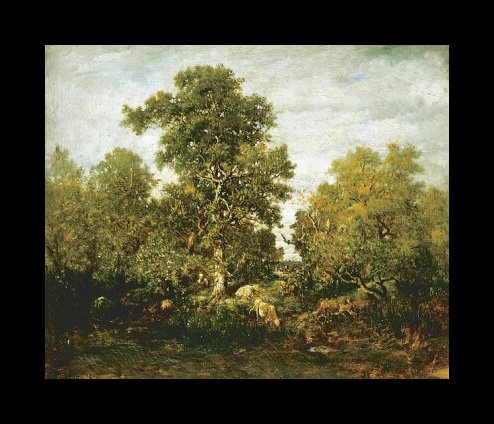
Theodore Rousseau was a leading painter of the Barbizon School in France. Rousseau was introduced to art at an early age through the many artists in his family. Rousseau’s uncle exposed him to outdoor painting, taking him on outings in the countryside. Rousseau traveled around the Auvergne, a wild and rugged region of France and made hundreds of sketches and drawings of his surroundings.
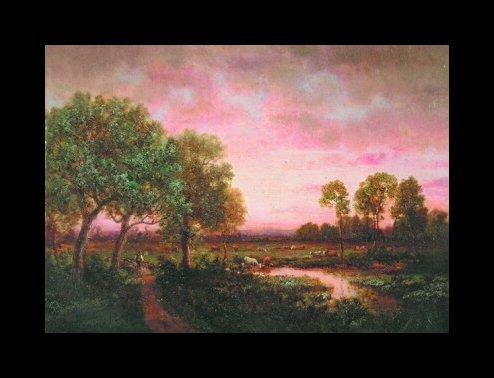
Rousseau had an acrimonious relationship with the Paris salons and the art academics of the time. Rousseau’s paintings were often refused for entrance at the salons.
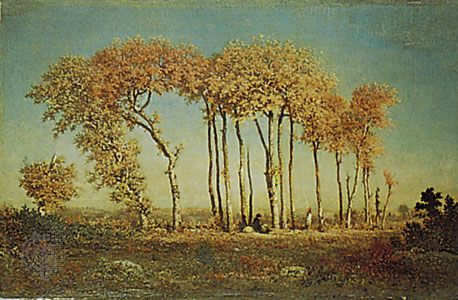
One journal describing Rousseau’s paintings noted:
(Rousseau) only likes the painful and convulsive side of nature; the trees devastated by the wind, the branches fallen by the wind, spread out by old age…’
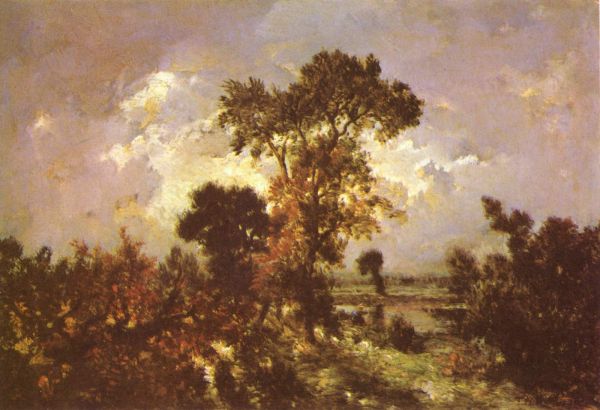
Rousseau was often dismayed by negative feedback, and for sometime he stopped submitting his work to the Salons. During this time of ‘artistic exile’ from Barbizon, Rousseau produced some of his finest paintings. These paintings included The Chestnut Avenue and The Marsh in the Lands, which now hang in the Louvre.
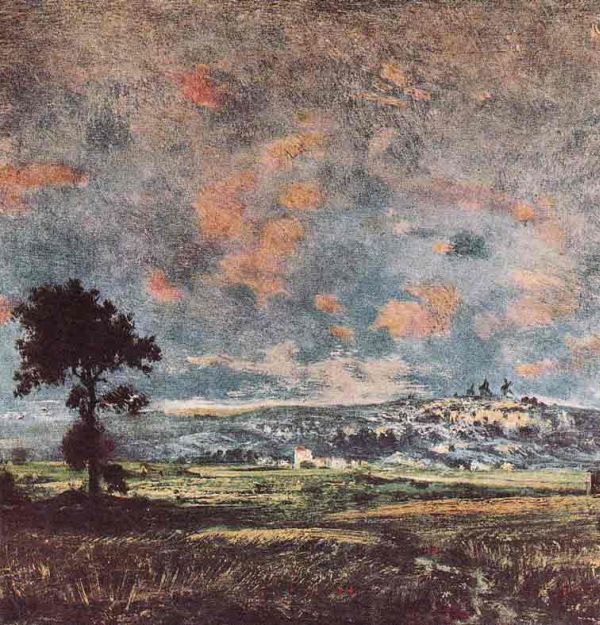
Rousseau settled in Barbizon, living and painting in a small cottage that he bought. Many artists came to paint with Rousseau, nick-named ‘the rejected one’. Rousseau did not waiver in his determination to create landscapes and he continued to paint with the same devotion. It is said that what distinguishes Rousseau’s paintings from his contemporaries, is his superb way of handling light. Rousseau paved the way for future Impressionist painters such as Monet.
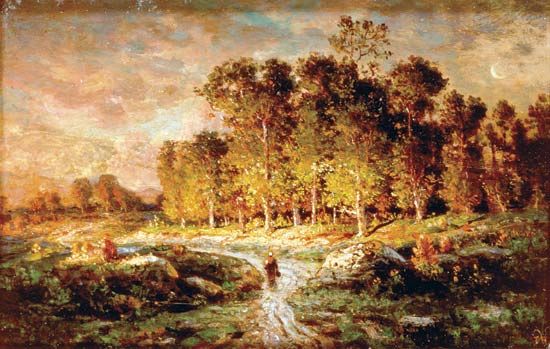
Rosseau was fascinated by the powerful orange and crimson sunsets in the Forest of Fontainebleau, which he painted many times.
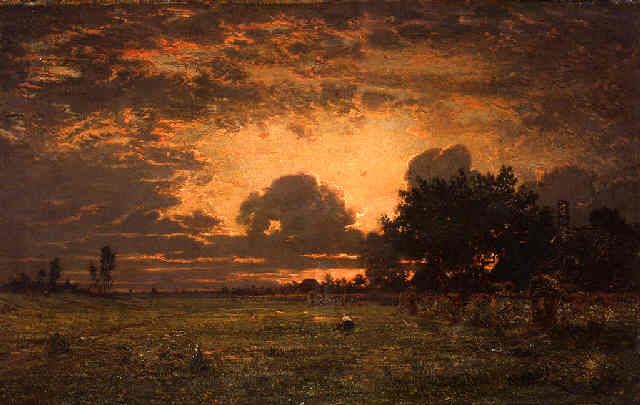
Rousseau had many pupils, including Narcisse-Virgile Diaz de la Pena. Narcisse was initially influenced by the work of Eugene Delacroix but was drawn to Rousseau when he visited Barbizon in 1835. Rousseau encouraged Narcisse to concentrate on painting realistic landscapes. Rousseau’s pupil was one of the first of the Barbizon group to achieve financial and popular success. Rousseau’s popularity grew into public acceptance in the late 1840s. Rousseau was invited to sit on the committee of the Paris Salon and received a large commission form the French State to produce a landscape. In 1949, Rousseau received a First Class medal from the Salon. In 1852 Rousseau was named a Knight of the Legion of Honor.
Rousseau faced hard times in his older life, as his wife struggled with a mental illness. Rousseau grew ill on a trip to the Alps, and was never able to recover. Rousseau died in the presence of his lifelong friend, painter Jean-Francois Millet.
As one of the leaders of the School of Barbizon, Rousseau’s paintings are highly sought after. Rousseau’s paintings are in museums and collections throughout Europe and the United States. Do you think you own a painting by Rousseau? Contact us. We are the Rousseau experts.
Reviews
1,217 global ratings
5 Star
4 Star
3 Star
2 Star
1 Star
Your evaluation is very important to us. Thank you.
